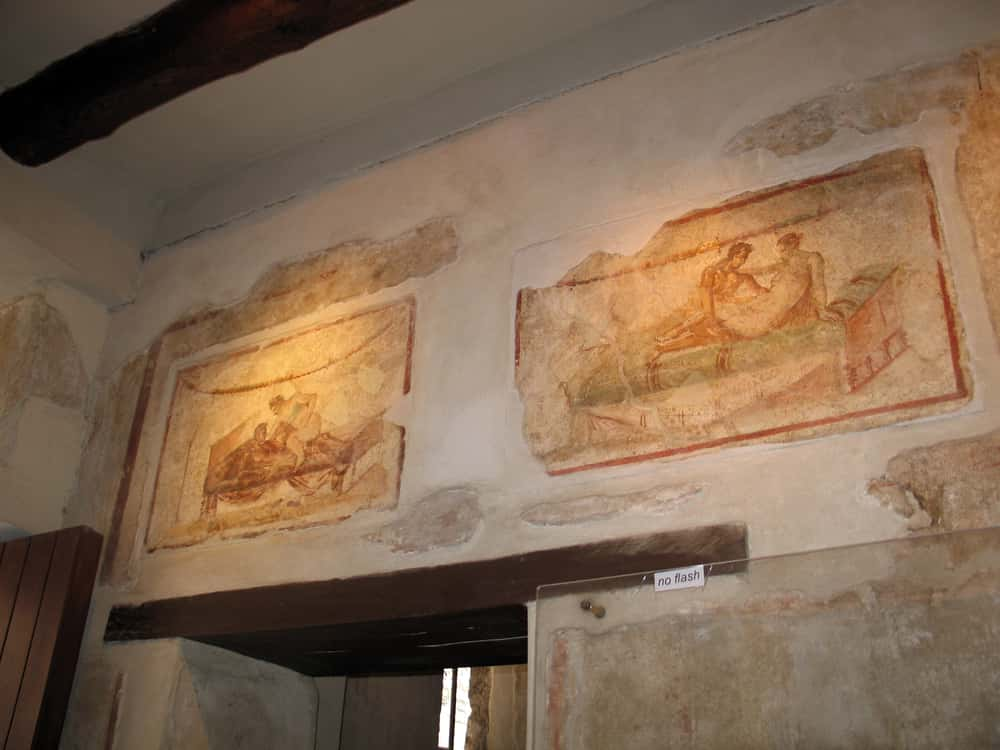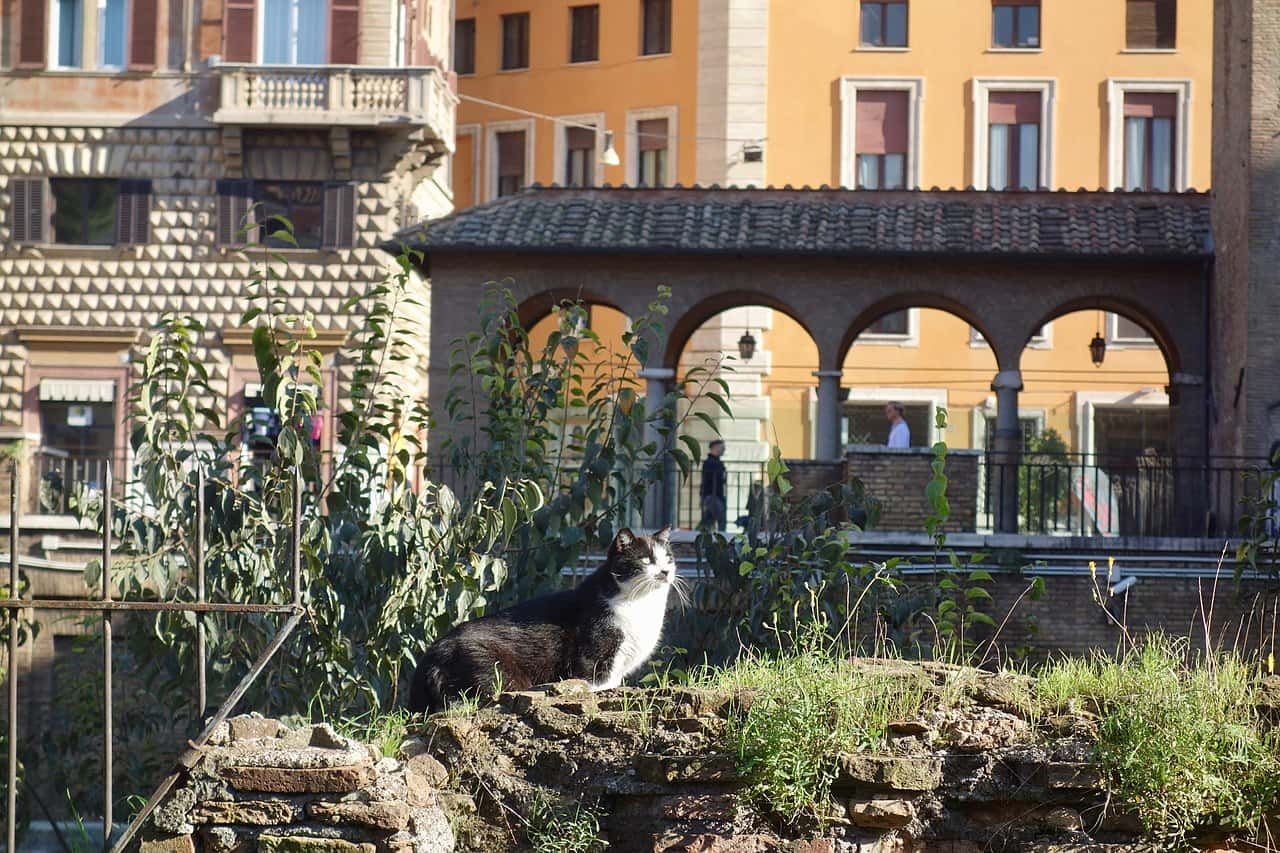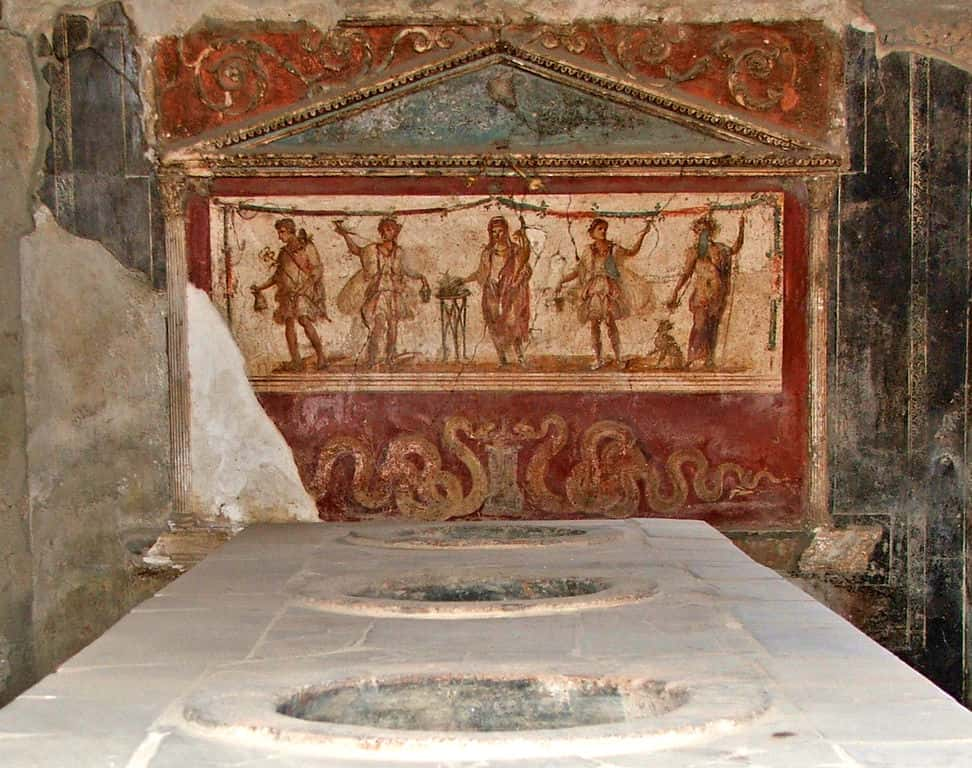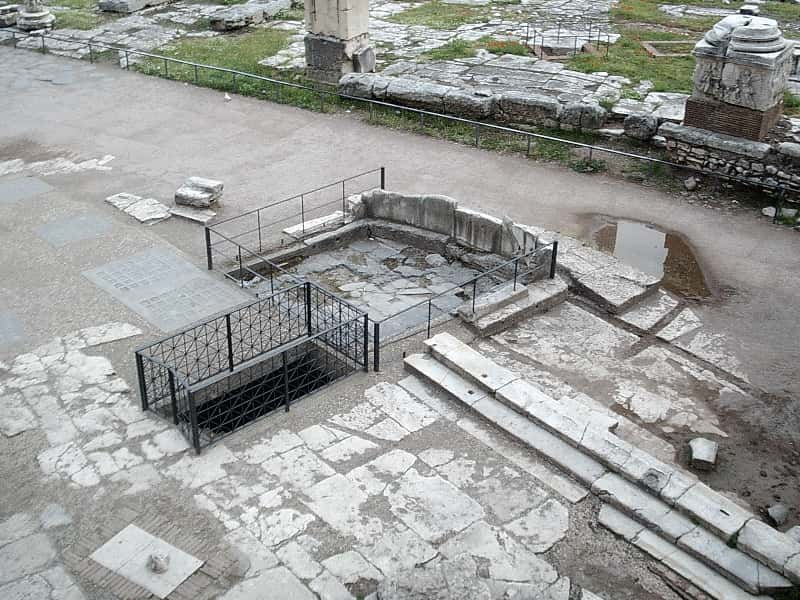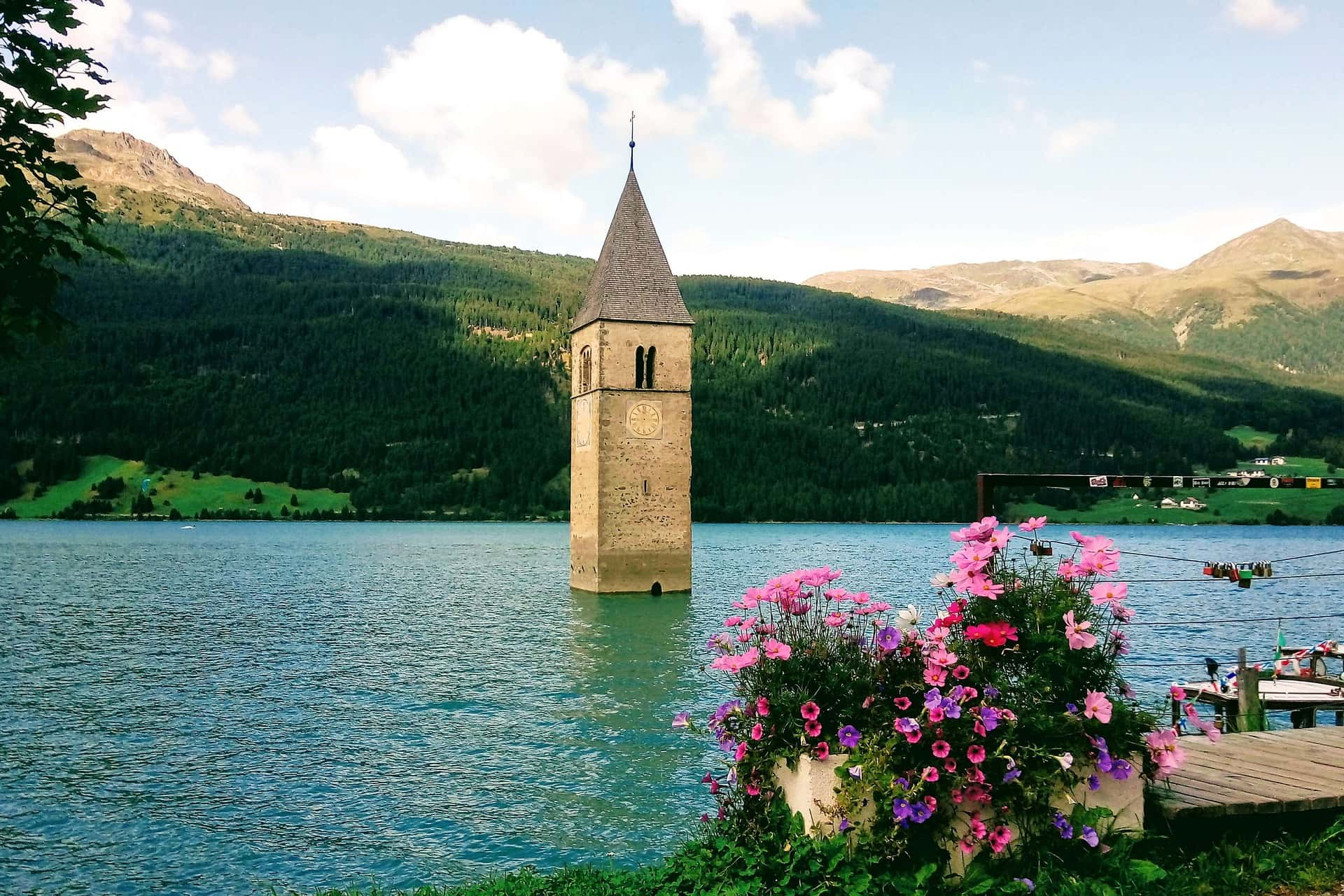"In Italy, for 30 years under the Borgias, they had warfare, terror, murder and bloodshed, but they produced Michelangelo, Leonardo da Vinci and the Renaissance. In Switzerland they had brotherly love, they had 500 years of democracy and peace - and what did that produce? The cuckoo clock." —Graham Greene
"In Italy, on the breaking up of the Roman Empire, society might be said to be resolved into its original elements, into hostile atoms, whose only movement was that of mutual repulsion." —Edward Everett
Italy. The land of culture, food, passion, and song. One of the most beautiful places on earth, the country has a long and storied history that one can feel walking through its streets, parks, and museums. From the wine to court intrigue, the Medici to the Roman Catholic church, there are a lot of interesting facts about Italy to explore and learn in order to impress your super proud Italian friends with next time you see them.
Italian History Facts
52. Cash Money Kids
Crime happens everywhere, and often it comes from unexpected sources. When there was a rise in the crime rate in Milan during 2010, police found that it was due to gypsies. After setting up an investigation, many children were found to be involved. It proved to be highly lucrative as well, with some of these kids raking in up to $20,000 a month.
51. Embarrassing Art
The people of ancient Pompeii loved their erotic art. That’s no secret now, but when King Francis I of Naples first came across the explicit and erotic art of Pompeii at the National Museum in 1819, he decided to lock much of it away. Only people who were deemed to have respectable morals were allowed to see the work, and even to this day, minors must be accompanied by an adult when visiting the exhibition.
50. Phallic Protection
In Pompeii, the phallus was a common deity and was considered to be a protective icon against the evil eye, which is a curse cast by a malevolent glare onto unsuspecting people.
49. Societal Priorities
The attitudes toward sex in Pompeii were very loose, unsurprisingly, and there were many brothels. When texts were excavated and translated from Pompeii, it was revealed that the price for visiting a brothel was often less than buying a loaf of bread.
48. Caesar and the Cats
Italy has a no-kill law that protects homeless cats. This means that there are organizations that volunteer to corral the cats into shelters and sterilize them. The most famous of these no-kill shelters is the Torre Argentina Cat Sanctuary. Why so famous? Because it is located in the Largo di Torre Argentina, which is where Julius Caesar was assassinated.
47. Fingers in Florence
Galileo was probably pretty good with his hands. So good that three of his fingers were removed from his remains almost 100 years after his death. His middle finger is currently on display at the Museo Galileo in Florence, because of course, you want to see Galileo’s fingers.
46. House Arrest
It wasn’t until 1992 that the Catholic church issued a formal apology and said "my bad" for that time that they put Galileo under house arrest due to his scandalous argument that the Earth revolved around the sun.
45. Take-Out
The idea of fast food is an old one that dates back to ancient Rome, where the cities were full of take-out restaurants, which served food on open street counters. In fact, it is believed that people did not often cook at home in the Empire.
44. Tossing
In need of cash? Head on over to the Trevi Fountain of Rome and go for a dive. It is estimated that tourists toss in around 3,000 euros a day and 1.4 million euros every year into the fountain. Actually, don’t do that; it's illegal. The money has been diverted for a good cause, however, as it helped subsidize a supermarket for those in need living in Rome.

History's most fascinating stories and darkest secrets, delivered to your inbox daily.
43. Assisted Suicide
If you were feeling like your time was up and you happened to be a citizen of Ancient Rome, you could apply for assisted suicide to the Senate. If approved, you would be provided with free hemlock to drink.
42. Heap of Trash
One of Rome’s most famous and historical hills isn’t an actual hill at all. Monte Testaccio, or Monte dei Cocci, which means “Mount of Shards,” is an artificial construction built after 250 years of terracotta olive oil jars being disposed of piled themselves into a massive hill. The construction was intentional, however, and over the years this hill has seen its fair share of history.
41. Organic Foundation
When Venice island was originally constructed hundreds of years ago, its foundation was built with tree trunks. This project was a success, as even today those very same tree trunks are what hold central Venice up.
40. Sacred Questions
The Lapis Niger is one of the most ancient and sacred shrines in Italy, however, no one has any idea what it signifies. Actually, even the later Romans didn’t know, leaving the shrine in a cloud of sacred mystique for thousands of years.
39. 40 Days and Nights
Quarantine is an omnipresent word today, but its origins come from the days of the Bubonic Plague in Venice. In order to control the spread of the disease, the city would force ships to anchor offshore for a full 40 days before they were allowed to unload. 40 is said as “quaranta" in Italian, hence “quarantine.”
38. Free Wine
A local winery in the famous wine region of Abruzzo in Italy has recently opened up a 24-hour wine fountain...for free! Well, so long as you’re not a drunkard.
37. Kings of the Canals
Becoming a gondolier in Venice is a prestigious event. With only 400 licensed gondolas in the entire city, in order to be considered for the gig, one must go their intense exams and serious training. Even then, only a limited number of licenses are awarded each year.
36. Paint It Black
If you are lucky enough to become a gondolier, then your gondola is required by law to be painted all black.
35. Single at Home
The momma’s boy Italian man is not just a stereotype. If a male is single, they are known to stay at home until well into their 30s. This keeps Italian families close.
34. Hidden Da Vinci
Hidden behind a wall in Florence's city hall likely lies a lost masterpiece by Leonardo da Vinci. However, no one actually knows for sure if it is there or the state it is in, because no one wants to take the wall down; it also has a masterpiece fresco painted onto it, Giorgio Vasari's Battle of Marciano.
33. Poor Pizza
Originally a type of flatbread, pizza didn’t become what it is today until tomatoes were brought back from the Americas. Originally thought to be poisonous, tomatoes were adopted as a staple in the poor neighborhoods of Naples, which led to the development of modern pizza. A boom happened when word spread about the great food and tourists fled to the ghettos of Naples to have a taste.
32. Pizza Rules
The True Neapolitan Pizza Association was founded in 1984, and has strict rules on what is and is not an authentic Neapolitan pizza. To be considered true pizza, the dough must be hand-kneaded, spread no bigger than 35 centimeters in diameter or be thicker than a third of a centimeter in the middle, and it must be cooked in a domed, wooden oven.
31. Spreading Pizza Love
You love pizza. I love pizza. We all love pizza. But pizza wasn’t popular in the Western world until after World War II. When troops who were stationed in Italy arrived back home, their love for pizza had to be satiated, which led to more pizzerias and the spread of pizza love. In the United States, everyone from private to future President Dwight D. Eisenhower arrived home a pizza fiend.
30. French Connection
The Italian flag is similar to the French flag, and that's no an accident: the flag was originally inspired by the French one.
29. Color Shows
Modern rockets and fireworks come from China, however, if it wasn’t for Italy we wouldn’t enjoy fireworks the way we do today, as the Italians were the ones who added metallic powders in order to create colors in the fireworks.
28. Bucket Battles
To this day, there lies a bucket in Modena, Italy, that was stolen from Bologna in 1325 and promptly started the War of the Bucket. The large battle that decided the war was the Battle of Zappolino, in which 2,000 men lost their lives...over a bucket. (Of course, it was all part of a larger, older rivalry...but it was still also about a bucket).
27. Mafia Economy
The Mafia is no joke. Their network in Italy is so large, it's estimated that they make up 7% of the country’s entire GDP.
26. Fast Cops
There is no escaping the Italian traffic police. Not because they are that good, but because they sometimes drive in Lamborghini Gallardos. It’s best to abide by the traffic laws in Italy—though many would say that it seems there are no driving laws in Italy.
25. Forced Smile
Milan has an interesting law that sets up lofty expectations for their population. The law is that people must be always smiling. That’s right, if you’re in Milan, you better be smiling.
24. Don’t Mistake Your Sausage
If you make it to Italy and are ready to chow down on what you know as pepperoni, you’d better watch what you ask for, as the word “pepperoni” in Italian actually means bell peppers, not the delicious spicy sausage North Americans love on pizza.
23. Education Matters
The oldest University in the world still in operation is the University of Bologna in the city of, you guessed it, Bologna, Italy. The university was opened in 1088. Italy is also home to the largest university in Europe (the University of Rome), which has an incredible 150,000 students.
22. Towering Lake
Lake Reschensee is a beautiful sight to see, but it has an interesting wrinkle that makes it a fascinating piece of history. In the middle of the lake, there is the top of a tower protruding, which is the last visible sight of a now-submerged village that is not completely underwater.
21. Sites of Culture
You know Italy is beautiful, even if you haven’t been there. So does UNESCO, who have awarded the country with the most world heritage sites (53) in the entire world.
20. Countries Inside Countries
Italy has two different countries inside of its borders: San Marino and Vatican City.
San Marino
19. Closed Borders
Vatican City has the privileged distinction of being the only country in the world that is permitted to lock its gates come nighttime.
18. Proud to Be Old
Not only is San Marino the oldest republic in the world, being founded in 301 AD, but it also has the oldest constitution, which was originally written in 1600. San Marino is actually a microstate, which is surrounded entirely by Italy. Though it has more vehicles than people, it has no national debt.
17. WhatsApp Break up
Getting divorced sucks, and there is no denying the role of text messages in the breakdown of modern relationships. About 50% of all divorce proceedings in Italy cite the app WhatsApp.
16. Underwater Jesus
Many countries have imitated it now, but the first Christ of the Abyss (a submerged statue of Jesus) was placed by the Italians into the Mediterranean Sea. Its location was chosen because it was the spot where the first Italian SCUBA diver, Dario Gonzatti, died.
15. Baby Help
In order to bring the country's birthrate up, both Italy and the Catholic church have offered rewards for families who bear more than a single child.
14. Stick to Your Roots
When McDonald’s opened its doors in Rome for the first time in 1986, protesters set up shop outside the chain and passed out spaghetti.
13. Human Chess
The town of Marostica, Italy is home to a massive life-sized chess match. Held every two years, this chess match takes place in the town’s piazza in memory of a life-sized chess match that took place in 1454 when two men competed against each other in order to decide who would take the hand of a girl they both liked.
12. Tapping Resources
Most of Italy is mountainous or hilly, and the country is full of natural wonder. However, due to thousands of years of cultivation, empire, hunting, and industry, most of the country's native flora, fauna, and wildlife has completely disappeared.
11. Volcanic Land
Standing on a fault line, Italy has the most volcanoes in Europe, and three of them are still active. These volcanoes (Mounts Etna, Stromboli, and Vesuvius) have all erupted in the past 100 years.
10. Only Italian
In an attempt to create a new Italian Empire, fascist dictator Benito Mussolini decided to rid foreign words from his country and changed words that were burrowed into new Italian words. He went as far as renaming cartoon characters, and Mickey Mouse became “Topolino.”
9. Football Ties
When you think of Italy, you think of soccer—er, football, which the Italians call “calcio.” However, the sport was actually introduced to the country by none other than the British.
8. Mike’s Colors
Michelangelo di Lodovico Buonarroti Simoni, or just Michelangelo, created some of the world’s finest masterpieces. For years, many thought that the master painted in dark shadowy tones, however, this was proved false when his Sistine Chapel fresco was restored and bright colors were revealed under the mask of smoke and dirt. This didn’t stop some art historians from claiming that he had actually painted shadows, and that those who restored the paintings ruined them.
7. Coffee Issues
Starbucks once respected Italy so much that it refused to open a shop in the country's borders. That was until now, as they have plans to open their first site in September 2018 in Milan. Needless to say, the locals are not too happy about it.
6. No Dying Allowed
If you need to die, just make sure you don’t do it in Falciano del Massico. The town’s cemetery is full, so they passed this law in order to control death, which is, of course, one of the only things we as humans can control.
5. Saved at the Hip
In 17th century Italy, after being convicted of murder and sentenced to death, a man was released because the court felt that he could not be killed, as it would result in the death of his brother. Why would this matter? Because they were conjoined twins. What's more, the murder was actually committed in response to someone making fun of his twin.
4. Witches of Sardinia
Sardinia is home to local “witches” who are responsible for keeping tabs on the health of their natives. They are known for making potions for people, and they even have their own secretive language, which they pass on only to their daughters.
3. Forking Around
Pasta wasn’t created in Italy. Instead, dried pasta was brought to the land by Arab merchants in the 13th century, was originally cooked with honey and sugar, and was eaten with the hands. Because spaghetti became so popular there, the Italians were the first to widely adopt the fork.
2. Orgy the Pain Away
In the middle of the Black Death the people of Florence would gorge themselves with orgies. Quite reasonably, if it was the end of the world, they thought they might at least have fun.
1. Too Much Art
Florence is an incredible city blossoming with all of the different flavors of Renaissance art. However, this can sometimes cause some dizziness in a person if they are not prepared. This dizziness is not a joke, and this overwhelmed feeling has been given the name "Stendhal syndrome." The French author who gives the name to this syndrome felt it when he visited Florence.
Sources: 1, 2, 3, 4, 5, 6, 7, 8, 9, 10, 11, 12, 13, 14, 15, 16, 17, 18, 19, 20, 21, 22, 23





